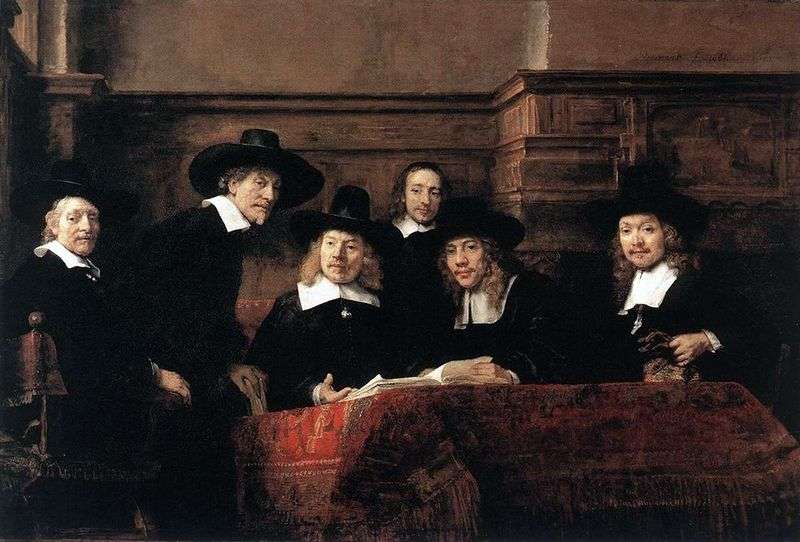
Painting of the Dutch artist Rembrandt van Rijn “Sindiki Clothshop”. Group portrait size 191.5 × 279 cm, oil on canvas. “Neither a symbol, nor a drama, nor the slightest narrative element: five men sitting at a table covered with a red cloth and talking about their affairs… Goodbye to the ideal… Here is just painting! She alone holds the lead in this work, she alone elevates picture to the heights of artistic perfection.
What is special about this picture? And the fact that the painter Rembrandt by purely artistic means – paint, light, shadow – created space on the smooth surface of the canvas, plastically depicted figures reflecting and talking among themselves, carrying the flame of immortality in themselves… workshops clothiers. They gathered to discuss the craft affairs, but with the same success they could discuss the fate of the world, the problems of the reformation of faith, the politics of Europe, trade with the East Indies, questions of science or fine arts. Such personalities opposed the royal house of Austria and Spain. “
Around the book with tissue samples gathered confident representatives of the authorities, who owed this not to princely favor, but to their own determination, their own intelligence, their own dexterity. “What gives these heads a special appeal is something undercurrent, a certain kind of own thinking, a special look at the outwardly visible, individual, depending on temperament: sitting on the left edge ironically and arrogantly, seriously and with a bad mood – depicted next to him, a little standing up.
A certain patina of favor in the face of the person sitting in the center is indifferent, with distracted thoughts, far from the mercantile, a young man sitting next to him with big eyes and full sensual lips. The latter is finally depicted with a bored-contemptuous mine. “Before us are enjoying the achievements of all the sufferings and victories of the people, the legendary prototype of which Rembrandt’s sublime irony embodied in the Batavian Conspiracy the same year, turning them into a vivid personification of the big bourgeoisie of its time.
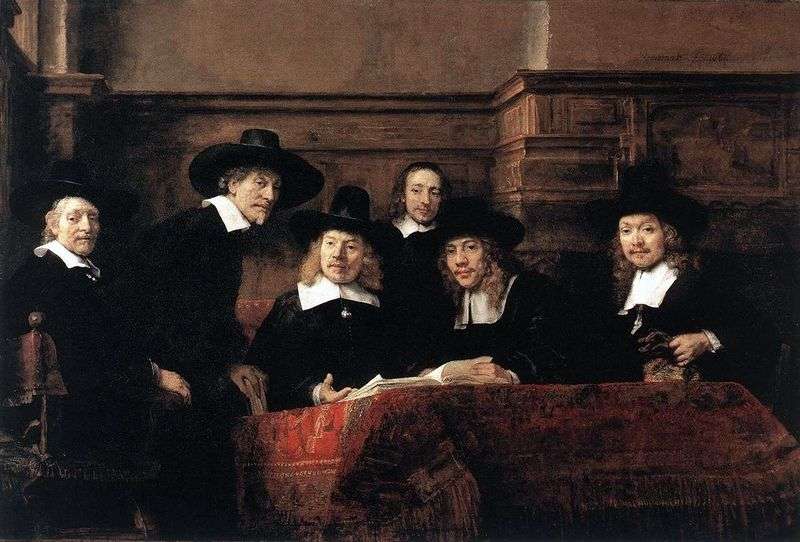 Portrait of Syndicus cloth shop by Rembrandt Harmens Van Rhine
Portrait of Syndicus cloth shop by Rembrandt Harmens Van Rhine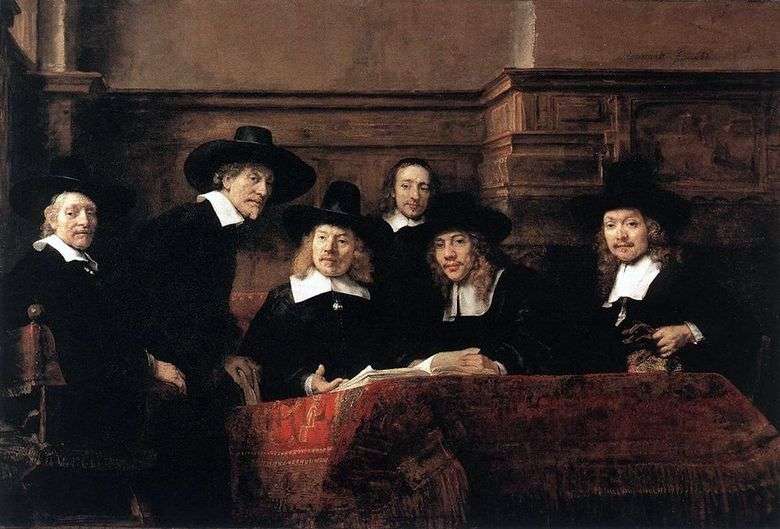 Tienda de telas Sindik – Rembrandt Harmens Van Rhine
Tienda de telas Sindik – Rembrandt Harmens Van Rhine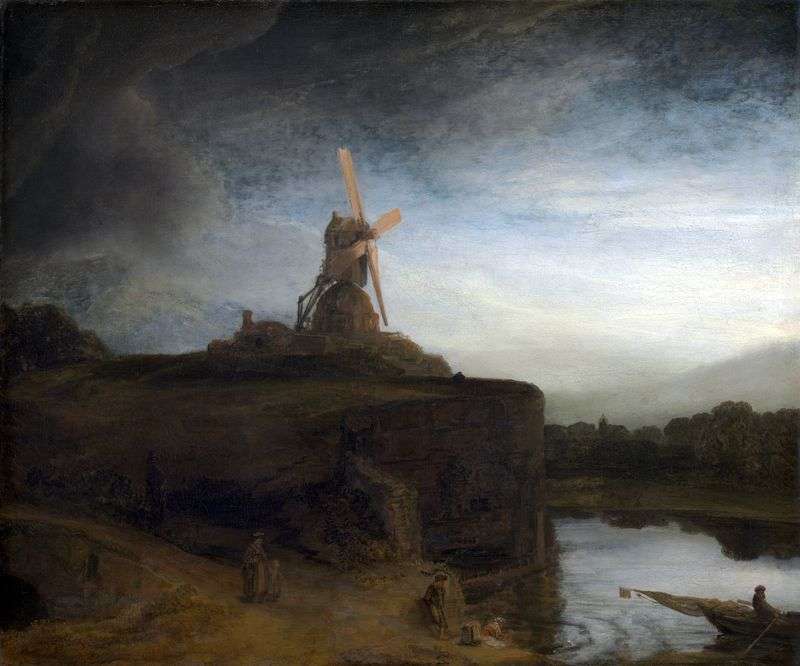 The Mill by Rembrandt Harmens Van Rhine
The Mill by Rembrandt Harmens Van Rhine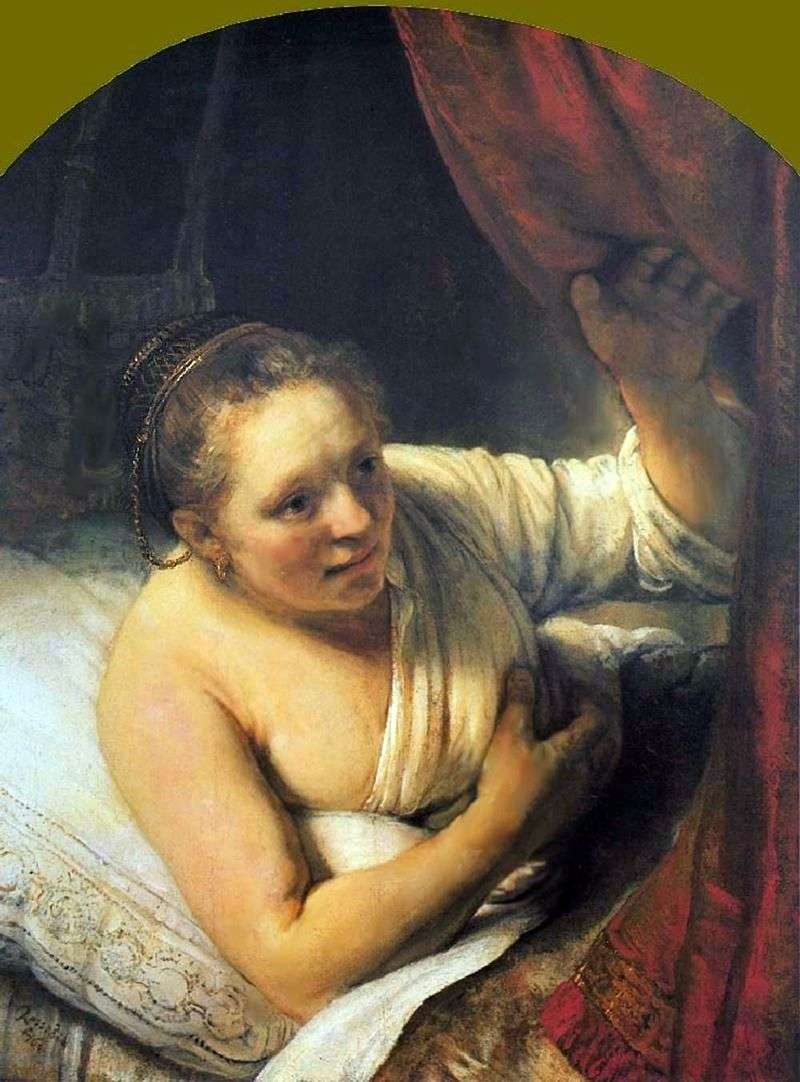 Young Woman in Bed by Rembrandt Harmens Van Rhine
Young Woman in Bed by Rembrandt Harmens Van Rhine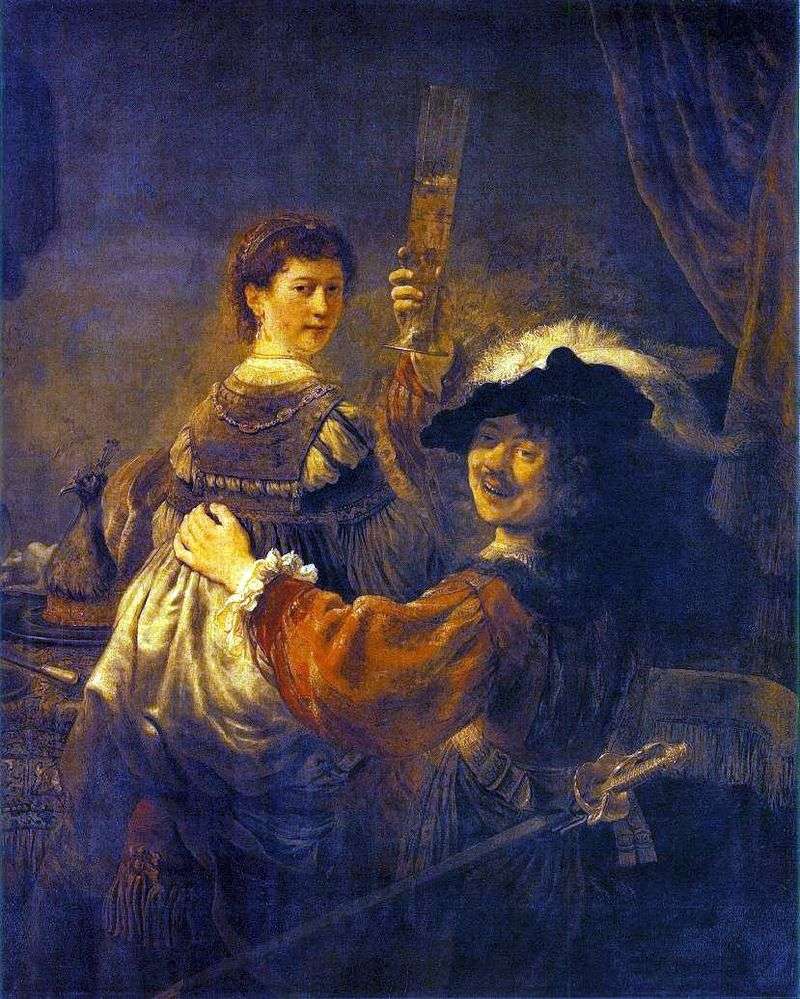 Fun Society (Self-Portrait with Saskia on Your Lap) by Rembrandt Harmens Van Rhine
Fun Society (Self-Portrait with Saskia on Your Lap) by Rembrandt Harmens Van Rhine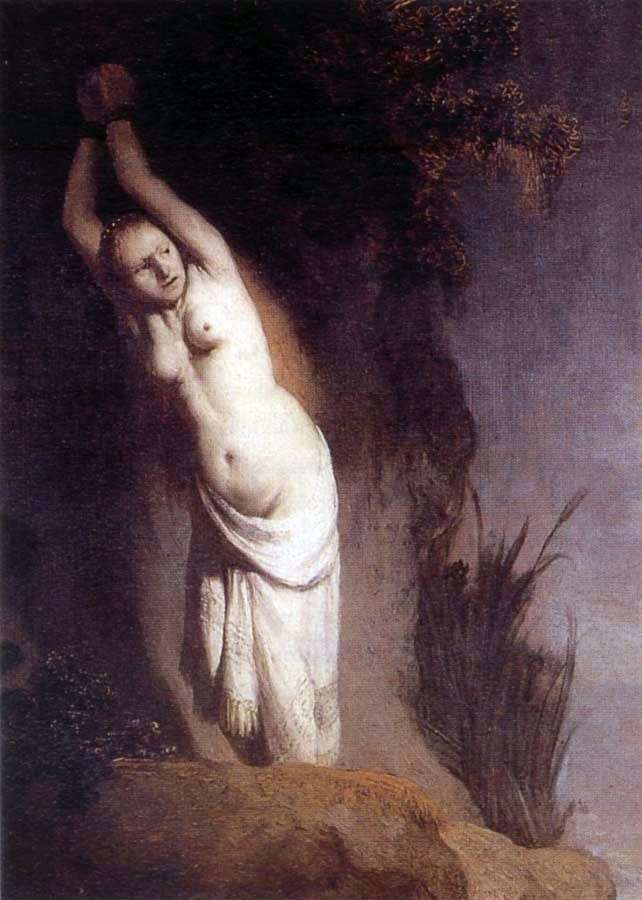 Andromeda by Rembrandt Harmens Van Rhine
Andromeda by Rembrandt Harmens Van Rhine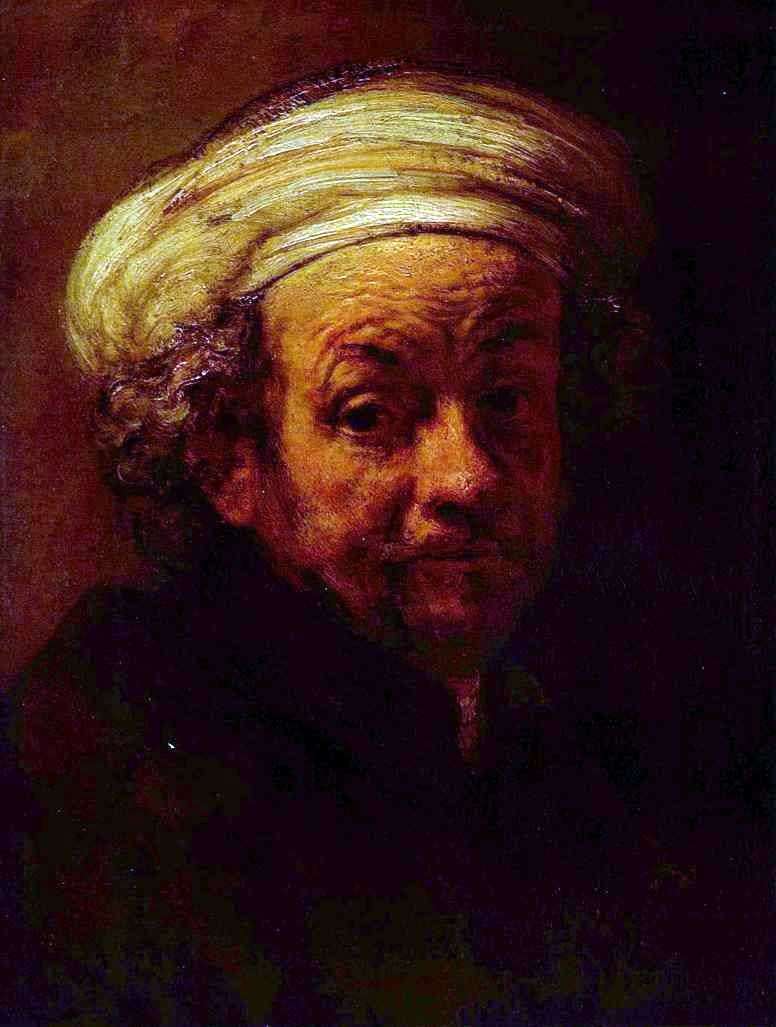 Self Portrait by Rembrandt Harmens Van Rhine
Self Portrait by Rembrandt Harmens Van Rhine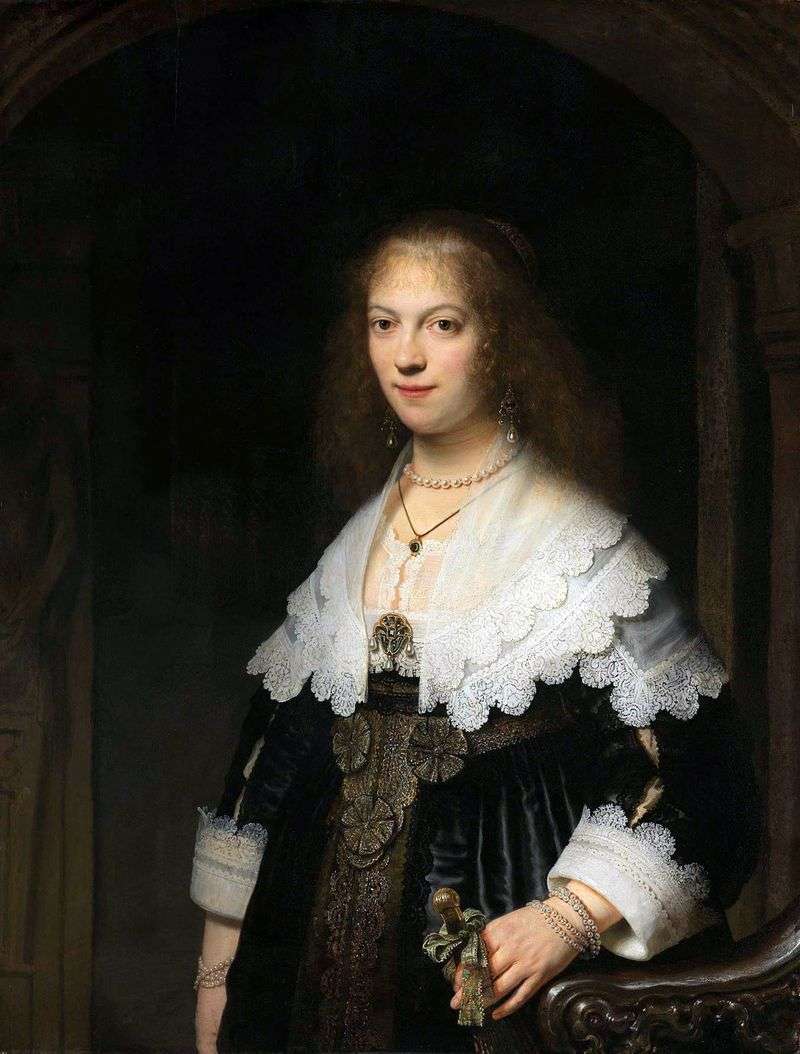 Portrait of Maria Trip by Rembrandt Harmens Van Rhine
Portrait of Maria Trip by Rembrandt Harmens Van Rhine